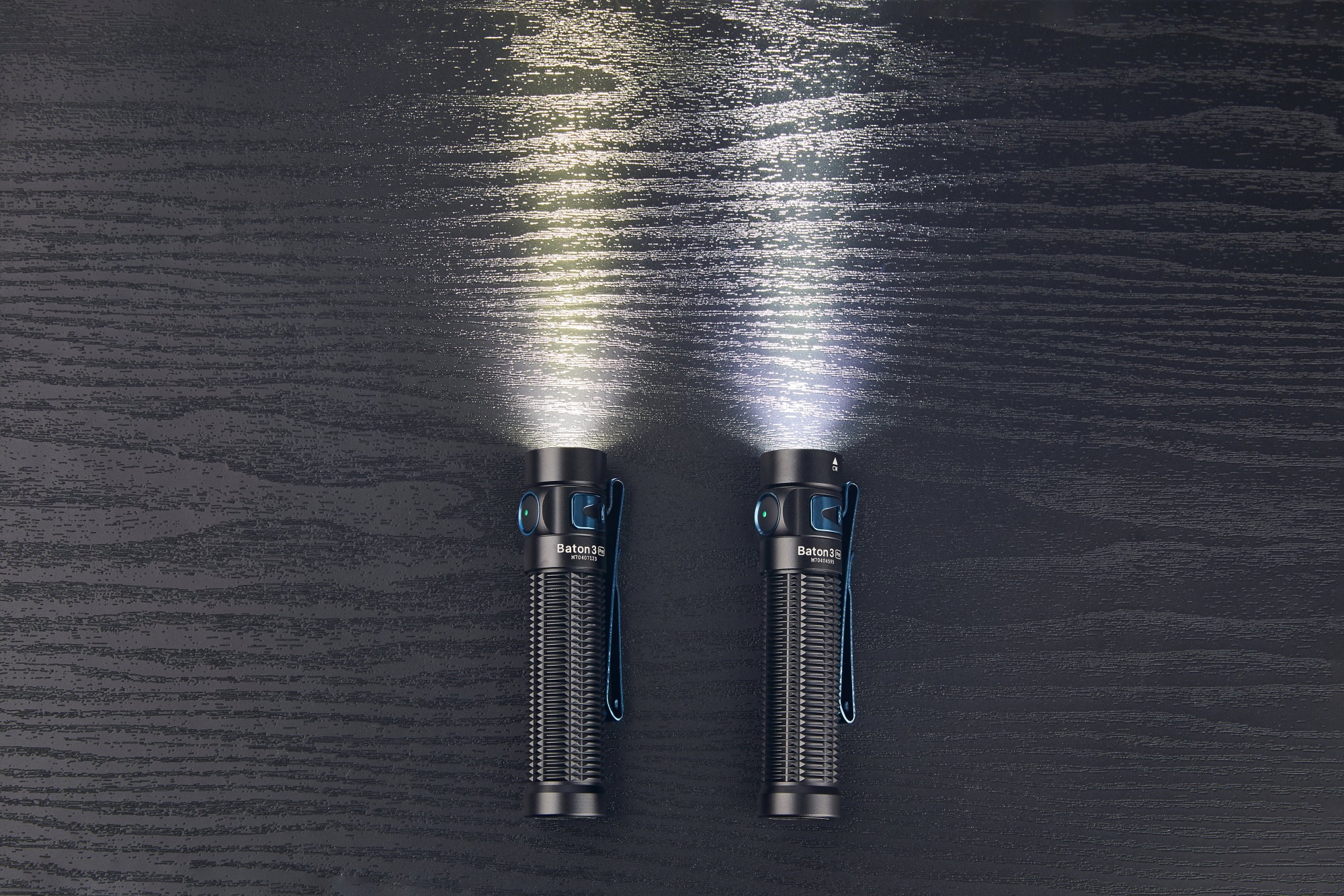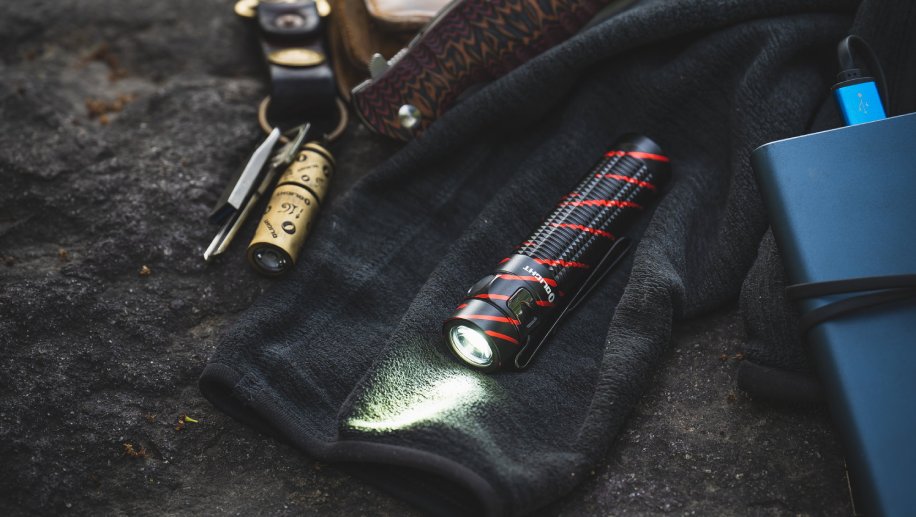Flashlights are essential tools for many outdoor enthusiasts, emergency responders, and professionals. However, navigating the various terms and specifications can be confusing, especially for newer users. In this article, we will define and explain some of the most important terms and concepts related to flashlights.
✅Lumens:
Lumens are a unit that measures the total amount of visible light emitted by a flashlight or headlamp. The higher the number of lumens, the brighter the light output. For example, the Olight Baton 3 Pro Max has a maximum output of 2500 lumens, making it one of the brightest flashlights on the market.

✅Beam Distance:
Beam distance refers to the maximum length of the illuminated area produced by a flashlight or headlamp. It is typically measured in meters or feet. For example, Olight Javelot Mini Long Range Flashlight has a beam distance of up to 600 meters, making it ideal for long-range outdoor activities such as hiking and hunting.
✅Runtime:
Runtime refers to the length of time that a flashlight or headlamp can operate on one set of batteries or a single charge. It is typically measured in hours. For example, Olight Baton 3 Pro has a maximum runtime of 120 days, making it an excellent choice for extended trips or emergency situations.
✅Battery Type:
Flashlights and headlamps can use a variety of battery types, including disposable alkaline batteries, rechargeable lithium-ion batteries, and rechargeable nickel-metal hydride (NiMH) batteries. For example, the Olight Baton 3 Pro uses a rechargeable lithium-ion battery that can be charged via MCC3 USB charging cable, making it convenient for on-the-go charging.
✅LED:
LED stands for light-emitting diode. It is a type of semiconductor that emits light when an electric current passes through it. LEDs are widely used in flashlights and headlamps due to their low power consumption, long lifespan, and high brightness.
✅Reflector:
The reflector is the part of a flashlight or headlamp that focuses the light emitted by the LED into a concentrated beam. The shape and size of the reflector can affect the beam pattern and brightness of the light.
✅Resistance:
Water resistance and impact resistance are two important features to consider when choosing a flashlight.
IP Rating: The International Protection (IP) rating is a two-digit code that indicates the level of protection against dust and water. The first digit indicates the level of protection against solids (dust), while the second digit indicates the level of protection against liquids (water).
The IP rating system consists of the letters “IP” and two numbers.
Quick example: IP68
The first digit (6) stands for particle protection like dust
The second digit (8) stands for water protection
If there’s a number 0, it means an item was tested and has zero protection against that element.
If there’s a letter X, it means an item wasn’t tested against that element.
✅Lighting Modes of Flashlights
Flood and Spot are the two main lighting modes of flashlights.
Floodlight:
Flood lighting produces a broad, diffuse beam by spreading the light to cover as wide an area as possible. This mode is typically used for illuminating surroundings or working in narrow spaces. Flood flashlights have a wider beam than spot flashlights, and can evenly light up larger areas.For example, the Olight Marauder Mini features both a flood and spot beam, making it versatile for different lighting needs.
Spot Beam:
Spot lighting produces a highly focused beam by concentrating the light into a smaller area. This mode is typically used for long-distance illumination and targeting specific objects. Spot flashlights have a more powerful beam than flood flashlights, and can produce a concentrated and intense beam in the dark. For example, the Olight Javelot Mini Flashlight produces a 1000-lumen spot beam that can reach up to 600meters, ideal for outdoor activities that require additional lighting.
Both flood and spot flashlights have their uses and advantages, depending on the specific application requirements. The spotlight and floodlight functions of flashlights can be applied to various scenarios such as outdoor activities, home use, and industrial fields. For instance, during camping, hiking, or mountaineering, a spotlight flashlight can help with long-distance illumination and route location, while a flood flashlight can provide wider and softer illumination to light up the surrounding environment.
At home, a flood flashlight can be used to provide overall illumination during power outages or equipment repairs, while a spotlight flashlight can be used for locating and inspecting detailed work such as checking electrical issues or finding items. In some industrial fields such as construction, machinery, and aerospace manufacturing, a spotlight flashlight can help workers inspect equipment, check and locate parts, or locate work areas. Meanwhile, a flood flashlight can be used to illuminate larger work areas and improve work efficiency.
In conclusion, when choosing a flashlight, one should consider which type is more suitable for their needs based on practical requirements and usage scenarios.
Stobe Mode And SOS Mode
Strobe mode and SOS mode are two additional lighting modes that are available on some flashlights, in addition to the two main lighting modes of flood and spot.
Strobe mode is a high-frequency flashing mode that produces a disorienting effect on the eyes. It can be used as a self-defense tool or as a signal in emergency situations. When activated, the strobe mode will rapidly flash the flashlight's beam, which can temporarily blind and disorient a potential attacker. This mode can also be used to signal for help in emergency situations, as the flashing light can attract attention more easily than a steady beam.
SOS mode is an emergency signaling mode that produces a specific pattern of flashes to signal that someone is in distress or needs help. The SOS signal is a universal distress signal consisting of three short flashes, three long flashes, and three short flashes. When activated, the SOS mode will flash the flashlight's beam in this pattern, which can be recognized by search and rescue teams or other people who may be able to assist. SOS mode can be a lifesaver in emergency situations when communication or radio signals are not available.
In summary, strobe mode and SOS mode are additional lighting modes that provide users with added functionality and safety features, particularly in emergency situations. They can be activated quickly and easily, and can help users defend themselves, signal for help, or attract attention to their location.
✅Flashlight Color Temperature
CW and NW are color temperature designations for LED flashlights.

CW Flashlight(Cool White Flashlight):
A CW flashlight produces a cooler, bluish-white light with a color temperature of 5000K or higher. This type of flashlight is often used in outdoor settings, as the blue tint can be useful for illuminating objects from a distance or through haze or fog.
NW Flashlight(Neutral Flashlight):
An NW flashlight produces a more natural, white light with a color temperature between 4000K and 5000K. This type of flashlight is often used for indoor activities, photography, and other situations where color accuracy is important. The neutral white light can make it easier to distinguish colors accurately and reduce eye strain.
✅Flashlight switch mode:
Momentary-on and constant-on are two different switch modes for flashlights.
Momentary-on
Momentary-on, also called "momentary activation", means that the flashlight is only turned on when you hold down the switch button. The light will stay on as long as you keep the button pressed, and it will turn off as soon as you release the button. This type of switch is useful for situations where you need a quick burst of light and do not want the flashlight to stay on for an extended period of time.
constant-on :
Constant-on, also called "continuous activation", means that the flashlight will stay on as long as you keep the switch button pushed or until you turn it off manually. This type of switch is useful when you need a steady source of light for an extended period of time, such as when camping or working in a dark area.
Some flashlights may have both momentary-on and constant-on switch modes, allowing users to switch between the two as needed. Choosing the right switch mode for your flashlight can depend on your specific needs and preferences, as well as the situation in which you will be using the flashlight.
✅Type of Flashlight:
Tactical flashlights, EDC flashlights, and Keychain flashlights are Three different types of flashlights that are designed for specific purposes.
Tactical Flashlight:
A tactical flashlight is a flashlight that is designed specifically for use in tactical situations, such as law enforcement, military, or self-defense. These flashlights are typically made with durable materials such as aluminum or high-strength plastics, and they often feature a bright and focused beam with a high lumen rating. They also typically have features such as strobe mode and a crenulated bezel, which can be used for striking or breaking glass. Additionally, many tactical flashlights have a switch that allows users to turn the light on and off without having to cycle through different modes.
EDC Flashlight:
EDC (Everyday Carry) flashlight, on the other hand, is designed for everyday use and is typically smaller and more portable than a tactical flashlight. It is intended to be carried with you at all times and has a variety of purposes, from illuminating dark corners to finding your way in an emergency. EDC flashlights are usually lightweight, compact, and easy to carry, and many come with features such as keychain attachments or clips for carrying in a pocket or bag.
Keychain Flashlight:
A keychain flashlight is a small, compact flashlight that is designed to be attached to your keychain for easy access. These flashlights are typically very small and lightweight, making them easy to carry around with you wherever you go. They often come in handy in situations where you need to find something in the dark, such as when unlocking your front door late at night.
Keychain flashlights are designed to be portable and convenient, so they usually have a low-lumen output and a short battery life. However, many modern keychain flashlights feature LED technology, which produces a brighter and longer-lasting light than traditional incandescent bulbs.
In summary, tactical flashlights are designed for use in high-stress situations where reliability and functionality are crucial, while EDC flashlights are designed for everyday use and convenience.
keychain flashlights are a great choice for people who need a small and portable source of light for everyday use. They are easy to carry around with you and can be incredibly useful in a variety of different situations. When choosing a flashlight, it's important to consider what you will be using it for, as well as your personal preferences and needs.





